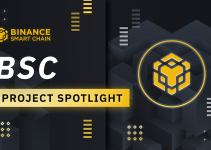Abstract
We target to design the consensus engine of BSC (Binance Smart Chain) to achieve the following goals:
- Wait a few blocks to confirm(should be less than Ethereum 1.0), better no fork in most cases.
- Blocking time should be shorter than Ethereum 1.0, i.e. 5 seconds or less.
- No inflation, the block reward is transaction gas fees.
- As much as compatible as Ethereum.
- With staking and governance as powerful as cosmos.
Geth implements two kinds of consensus engine: ethash(based on PoW) and clique (base on PoA). Ethash is not a fit option for BSC because BSC gives up PoW. Clique has smaller blocking time and is invulnerable to 51% attack while doing as little to the core data structure as possible to preserve existing Ethereum client compatibility. The shortcoming of PoA is centralization, and the lack of meaningful staking and governance capability on-chain. On the other hand, the Binance chain is built on Cosmos which does have a deployed staking and governance mechanism. Thus here we try to propose a consensus engine that:
- Binance chain does the staking and governance parts for BSC.
- ValidatorSet change, double sign slash of BSC is updated through interchain communication.
- Consensus engine of BSC keeps as simple as clique.
We investigated some popular implementations of PoA consensus and find out that Bor follows a similar design as above. We will borrow a few parts from Bor and propose a new consensus engine to achieve all these goals.
Infrastructure Components
- Binance Chain. It is responsible for holding the staking function to determine validators of BSC through independent election, and the election workflow are performed via staking procedure.
- BSC validators. Validators are responsible for validating transactions and generating blocks, ensuring the network’s security and the consistency of the ledger. In return, they receive rewards from the gas consumption of transactions.
- Staking dApps on BSC(also named as system contract). There are several genesis contracts to help implement staking on BSC. Five classification groups of them:
- Light client contracts. It is a watcher of distributed consensus process implemented by contract that only validates the consensus algorithm of Binance Chain.
- BSCValidatorSet contracts. It is a watcher of validators change of BSC on Binance Chain. It will interact with light client contracts to verify the interchain transaction, and apply the validator set change for BSC. It also stores rewarded gas fee of blocking for validators, and distribute revenue to validators when receiving cross chain package of validatorSet change.
- System Reward contract. The incentive mechanism for relayers to maintain system contracts. They will get rewards from system reward contract.
- Liveness Slash Contract. The liveness of BSC relies on validator set can produce blocks timely when it is their turn. Validators can miss their turns due to any reason. This instability of the operation will hurt the performance of the network and introduce more non-deterministic into the system. This contract responsible for recording the missed blocking metrics of each validator. Once the metrics are above the predefined threshold, the blocking reward for validator will not be relayed to BC for distribution but shared with other better validators.
- Other contract. The BSC may take advantage of powerful governance of Binance Chain in future, for example, propose to change a parameter of genesis. We will take this part into consideration to make it extensible.
Staking and Governance on Binance chain is at a higher layer upon consensus. As for Relayer, it is a standalone process and open about how to implement it. The detail of them will not be included in this doc.
This doc only focus on the BSC validators and Staking dApps on BSC parts which are more closely to consensus engine.
System Reward Distribution
The system reward structure in BSC is highly configurable. We may adjust the parameters through governance.
The rewards comes from transaction fees, rewards are distributed based on several(configurable) rules: 1. Validator that generate the block will receives 15/16 of the gas fee. 2. System reward contract receive 1/16 of the gas fee.
If the balance of System reward contract is above 100BNB, will not distribute any BNB to it. The coming section will explain how these contracts distributing reward.
Staking dApps on BSC
Light client contract
We can consider light client contract as a utility contract, we will not explain the detail of it in this doc. The following interfaces is used:
- isHeaderSynced(uint64 height) external
The block header of Binance chain must have synced before verifying any state against block at specified height.
- validateMerkleProof(bytes32 appHash, string memory storeName, bytes memory key, bytes memory value, bytes memory proof)
It will verify the existence key value or the absence of the key against the block at specified height.
- getAppHash(uint64 height) external
return the appHash of BC at specified height.
BSCValidatorSet contract
It is a watcher of validators change of BSC on Binance chain. It implement the following interfaces:
- handlePackage(bytes calldata msgBytes, bytes calldata proof, uint64 height, uint64 packageSequence)
Conditions:
1. Sequence in order.
2. Call MerkleProof lib to verify the msgBytes.
Action:
1. if the first byte of msgBytes is 0x00, do Actions validators update;
2. if the first byte of msgBytes is 0x01, do Actions jail.
Actions jail:
1. mark the validator as jailed.
2. reward the msg sender by call sytem reward contract.
Actions validators update:
1. Do distribue the revenue of validators:
if the revenue is large than 0.1 BNB, will do cross chain transfer to its account on BC, otherwise will transfer to its address on BSC.
2. Update the latest validatorSet.
3. Clean the metrics record on slash contract.
4. Reward the msg sender by calling sytem reward contract.
CurrentValidator() returns ([]address)
returns the the consensus address of not jailed validators.
deposit(address valAddr) external
Conditions:
1. The message sender must be the coinbase
2. Can only call once in one block.
Actions:
1. Increase the revenue of the validator.
System Reward contract
For now, only Light Client contract, BSCValidatorSet contract and TokenHub contract are permitted to call system reward contract. It implement the following interfaces:
- claimRewards(address payable to, uint256 amount) external
Conditions:
1. The message sender must in permission list. 2. The amount should be no more than 1 BNB
Actions:
1. Transfer amount of BNB to specified address
Liveness Slash contract
If a validator failed to produce a block, will record it and finally slash it. It implement the following interfaces:
- Slash(validator address) external
Conditions:
1. The message sender must in coinbase. 2. can only call once in one block.
Actions:
1. increase the missing blocks metrics of the validator by one. 2. if the missing blocks metrics is times of 50, will call misdemeanor func of BSCValidatorSet contract to trigger a misdemeanor event and distribute the revenue of the validator to others. 3. if the missing blocks metrics is times of 150, will call felony func of BSCVa
Consensus Protocol
The implement of the consensus engine is named as Parlia which is similar to clique. This doc will focus more on the difference and ignore the common details.
Before introducing, we would like to clarify some terms:
- Epoch block. Consensus engine will update validatorSet from BSCValidatorSet contract periodly. For now the period is 200 blocks, a block is called epoch block if the height of it is times of 200.
- Snapshot. Snapshot is an assistant object that help to store the validators and recent signers of blocks.
Key features
Light client security
Validators set changes take place at the (epoch+N/2) blocks. (N is the size of validatorset before epoch block). Considering the security of light client, we delay N/2 block to let validatorSet change take place.
Every epoch block, validator will query the validatorset from contract and fill it in the extra_data field of block header. Full node will verify it against the validatorset in contract. A light client will use it as the validatorSet for next epoch blocks, however, it can not verify it against contract, it have to believe the signer of the epoch block. If the signer of the epoch block write a wrong extra_data, the light client may just go to a wrong chain. If we delay N/2 block to let validatorSet change take place, the wrong epoch block won’t get another N/2 subsequent blocks that signed by other validators, so that the light client are free of such attack.
System transaction
The consensus engine may invoke system contracts, such transactions are called system transactions. System transactions is signed by the the validator who is producing the block. For the witness node, will generate the system transactions(without signature) according to its intrinsic logic and compare them with the system transactions in the block before applying them.
How to Produce a new block
Step 1: Prepare
A validator node prepares the block header of next block.
- Load snapshot from cache or database,
- If (height % epoch)==0, should fetch ValidatorSet from
BSCValidatorSetcontract. - Every epoch block, will store validators set message in
extraDatafield of block header to facilitate the implement of light client. - The coinbase is the address of the validator
Step2: FinalizeAndAssemble
- If the validator is not the in turn validator, will call liveness slash contract to slash the expected validator and generate a slashing transaction.
- If there is gas-fee in the block, will distribute 1/16 to system reward contract, the rest go to validator contract.
Step3: Seal
The final step before a validator broadcast the new block.
- Sign all things in block header and append the signature to extraData.
- If it is out of turn for validators to sign blocks, an honest validator it will wait for a random reasonable time.
How to Validate/Replay a block
Step1: VerifyHeader
Verify the block header when receiving a new block.
- Verify the signature of the coinbase is in
extraDataof theblockheader - Compare the block time of the
blockHeaderand the expected block time that the signer suppose to use, will deny ablockerHeaderthat is smaller than expected. It helps to prevent a selfish validator from rushing to seal a block. - The
coinbaseshould be the signer and the difficulty should be expected value.
Step2: Finalize
- If it is an epoch block, a validator node will fetch validatorSet from BSCValidatorSet and compare it with extra_data.
- If the block is not generate by inturn validatorvalidaror, will call slash contract. if there is gas-fee in the block, will distribute 1/16 to system reward contract, the rest go to validator contract.
- The transaction generated by the consensus engine must be the same as the tx in block.
Signature
The signature of the coinbase is in extraData of the blockheader, the structure of extraData is: epoch block. 32 bytes of extraVanity + N*{20 bytes of validator address} + 65 bytes of signature. none epoch block. 32 bytes of extraVanity + 65 bytes of signature. The signed content is the Keccak256 of RLP encoded of the block header.


